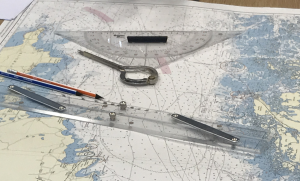I Situation Awareness – Seafarers – Initial Steps

The trigger for a SAR operation for the rescue authorities is the distress call from the vessel in distress or from another party relaying the distress message. The initial steps for the rescue authorities is to gather quality data upon which the initial rescue plan is formed. These preliminary steps are in general:
- Preliminary analysis of the incident, location and area specifics of the incident
- Assessing possible rescue procedures
- Assessing the need for resources
- Determining and assessing rescue plan options
The initial steps in a HNS incidents are most likely quite similar as would be when responding another type of incident at sea and can be applied to the Distress Vessel to support decision making. However, regardless the similarity of first steps, HNS involved in the SAR operation does have a great impact when assessing the rescue plan and response action possibilities.
Even though information gathering is an ongoing process, the quality and accuracy of information is essential in each phase. Without taking unnecessary risks, the crew should provide as much detailed information about the incident as possible to support rescue authority decision making.
Rescue operation and emergency response actions in a dangerous atmosphere is a high risk operation. National and international experts should be consulted for further information, but this kind of information is rarely available immediately. Therefore, the DV should contact rescue authorities at an early phase even they are able to manage the situation themselves. Early contact will ensure support at early stages and give time for rescue authorities to start their emergency procedures and resourcing just in case the situation worsens.

